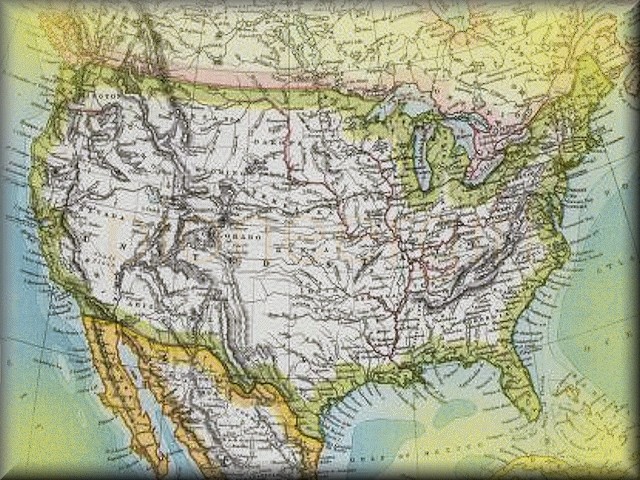America / American

America. From Amerigo Vespucci, a Florentine, who pretended to have first discovered the western continent. One of the great continents, first discovered by Sebastian Cabot, June 24, O.S. 1494, and by Columbus, or Christoval Colon, Aug. 1, the same year. It extends from the eightieth degree of north, to the fifty-fourth degree of south latitude; and from the thirty-fifth to the one hundred and fifty-sixth degree of longitude west from Greenwich, being about nine thousand miles in length. Its breadth at Darien is narrowed to about forty-five miles, but at the northern extremity is nearly four thousand miles. From Darien to the north, the continent is called North America, and to the south, it is called South America. — Webster, 1897
American. Pertaining to America; – in a restricted sense, pertaining to the United States. A native of America; – originally applied to the aboriginal inhabitants, but now applied to the descendants of Europeans born in America; and in a restricted sense to the inhabitants of the United States. — Webster, 1882
 Desperately she tried to remember all that she must say, but she could not get beyond, “America was discovered by Christopher Columbus in 1492. Columbus, a native of Genoa in Italy—” – Little Town on the Prairie, Chapter 24, “The School Exhibition”
Desperately she tried to remember all that she must say, but she could not get beyond, “America was discovered by Christopher Columbus in 1492. Columbus, a native of Genoa in Italy—” – Little Town on the Prairie, Chapter 24, “The School Exhibition”
America is a land mass in the western hemisphere consisting of North America and South America, joined by the Isthmus of Panama. In the Little House; books, Laura Ingalls Wilder refers to North America, used as a name for the United States of America.
The first formal use of the term “United States of America” dates to the Declaration of Independence. Thomas Jefferson’s 1776 original “Rough draught” (rough draft) was titled “A Declaration by the Representatives of the UNITED STATES OF AMERICA in General Congress assembled.” Months prior to this draft, the term was used in anonymous articles printed in The Virginia Gazette, published in Williamsburg.
At the time of Little Town on the Prairie, there were 38 states in the Union. Colorado had been admitted on August 1, 1876. North Dakota and South Dakota were admitted on November 2, 1889. Therefore, Laura’s “America” included (in order of admission): Delaware, Pennsylvania, New Jersey, Georgia, Connecticut, Massachusetts, Maryland, South Carolina, New Hampshire, Virginia, New York, North Carolina, Rhode Island, Vermont, Kentucky, Tennessee, Ohio, Louisiana, Indiana, Mississippi, Illinois, Alabama, Maine, Missouri, Arkansas, Michigan, Florida, Texas, Iowa, Wisconsin, Minnesota, Oregon, Kansas, West Virginia, Nevada, and Colorado. Map of the United States below is from an 1883 atlas by George Franklin Cram, published in Chicago by A.C. Shewey and Company.

Laura’s history book gives an account of the naming of the New World, saying that Vespucci visited the coast of Brazil and wrote a description of the countries he had seen. A German geographer suggested that the land be called “Americi Terra,” or the land discovered by Americans. Vespucci was the friend of Columbus, and it was thought he was innocent of any design to rob Vespucci of his honors. Both men were dead before the name became in general use, or was applied to the entire country. — Edward Taylor, The Model History. A Brief Account of the American People; For Schools (Chicago: George Sherwood & Co., 1878), 31.

America (FB 16; LTP 8, 24; PG)
American (FB 3, TLW 1, LTP 8)
flag (FB 16, LTP 8, THGY 13, 28)
Great American Desert (FB 16) – see Great American Desert
history (LTP 23, 24) – In Little Town on the Prairie, meaning the American history book used by Laura
United States of America (LTP 8)

